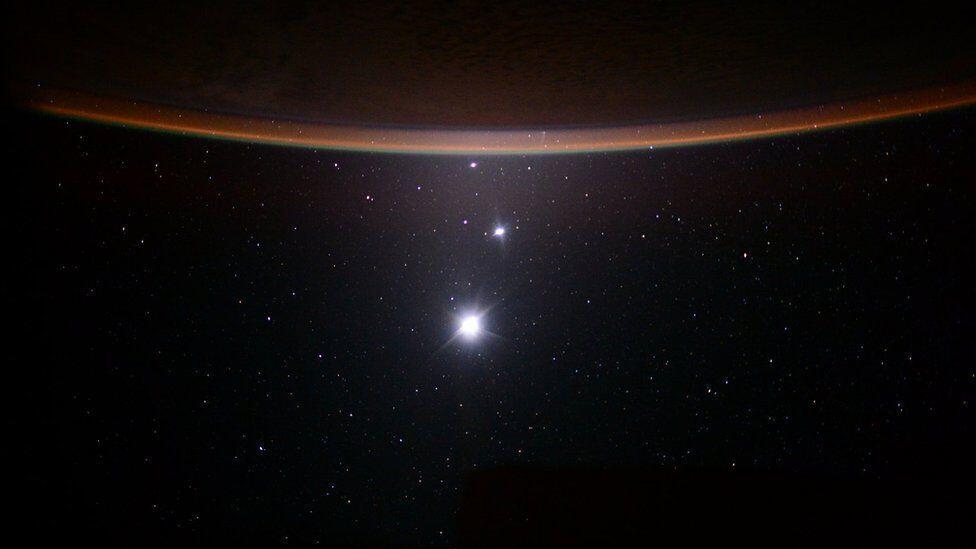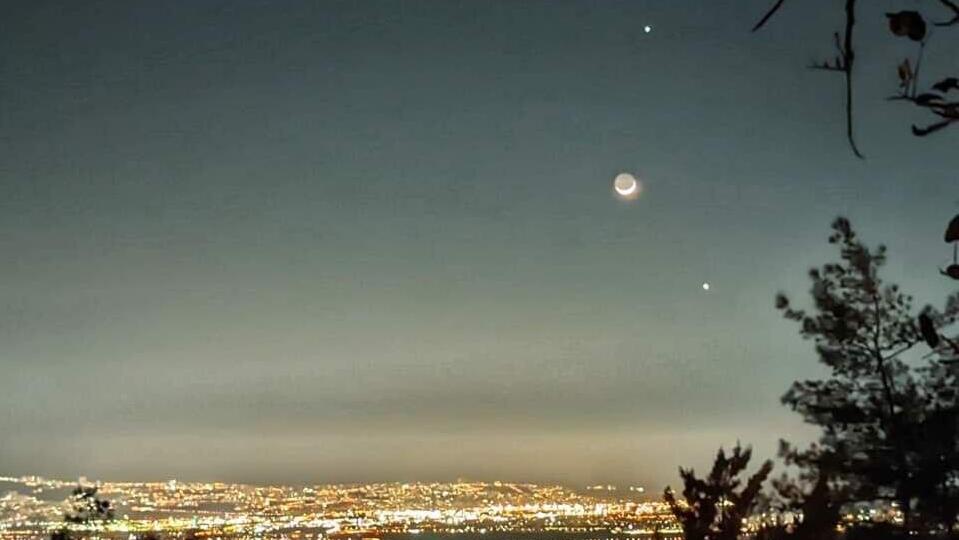Jupiter and Venus, two of the brightest stars in the solar system will appear to be right next to each other in a planetary conjunction overnight Thursday.
Throughout February, the two planets were getting close to each other, and have been shining, as they even aligned with the Moon last week.
But at the beginning of March, Jupiter, and Venus will be in conjunction, when the distance between them is "smaller than the width of a pinky finger," according to AccuWeather. The actual distance, however, would be 400 million miles apart, similar to the size of the full Moon in the sky.
Jupiter is expected to also conjunct with the Sun in about a month and then disappear from the evening sky for six months, but Venus will continue to accompany us in the months to come as an evening star.
Venus is the brightest planet in our solar system and the third object overall – after the sun and the moon – along with Jupiter.
It is recommended to follow the two planets in the next few days. Those who do so will be able to notice their movement against the backdrop of the sky.
Venus is the second closest planet to the Sun, so it completes one orbit around it in a period of about 7 months (244 days). Jupiter, however, is the fifth planet in its distance from the Sun, thus it takes around 12 years for it to complete one orbit around it (4331 days).
Because of the different orbits, the planets are located in different locations in the solar system. But from time to time, two or more planets line up more or less in one line in proportion to Earth. When this line is formed between the two planets and the Earth, it seems as if they are close to each other or in some cases overlap.



